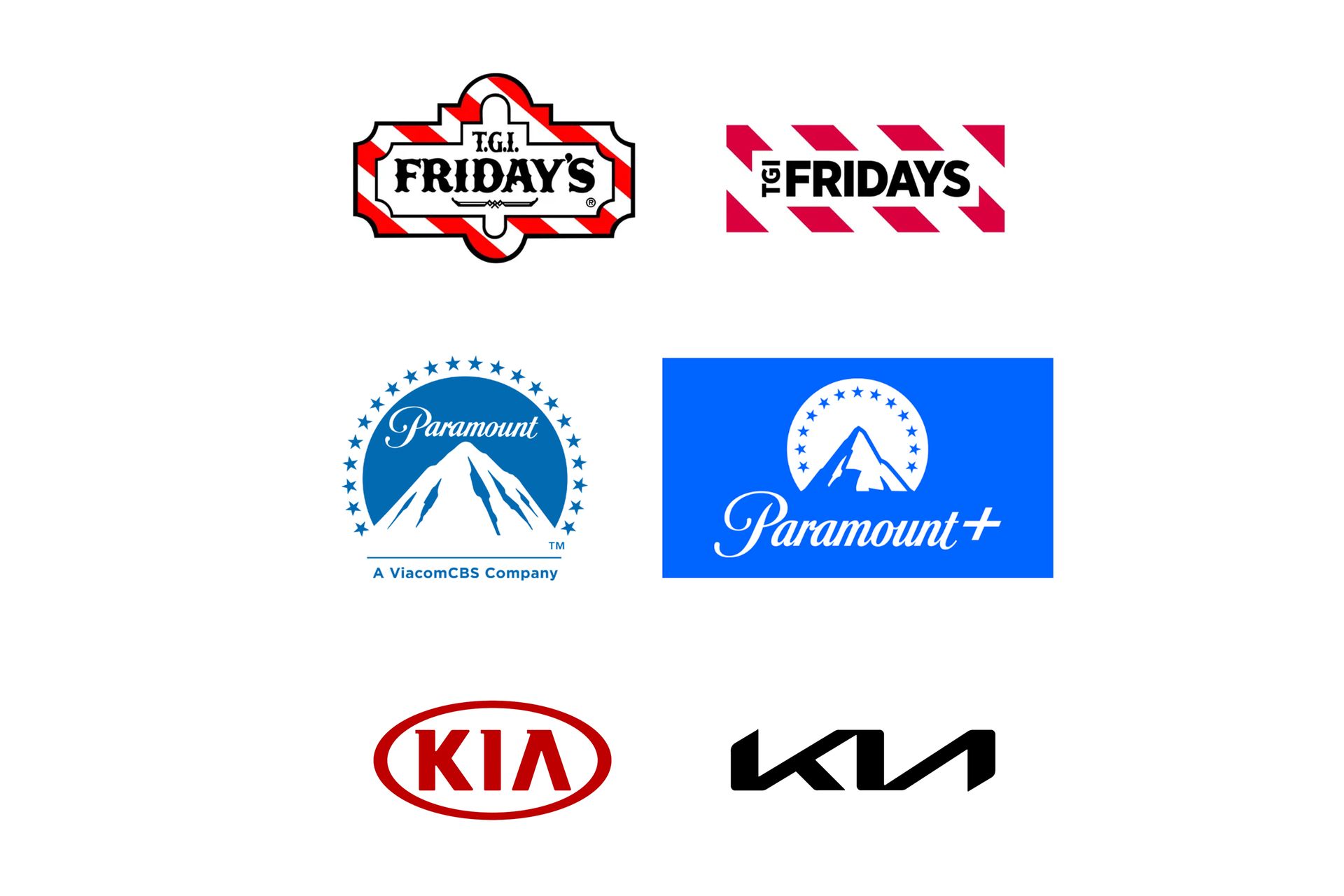Why your logo is not your brand
Why your logo is not your brand
In the world of marketing, the logo is often seen as the face of a brand. It's the visual representation that instantly comes to mind when we think of a company. However, what many fail to realize is that a logo is just one small piece of the puzzle. Your brand is so much more than just a pretty symbol. It's the essence of your business, the emotions it evokes, and the story it tells. A logo is merely a visual cue, while your brand encompasses everything from your values and personality to your customer experience and reputation. In this article, we will delve deeper into why your logo is not your brand and uncover the critical elements that make up a successful and impactful brand. So, if you're ready to take your branding to the next level and create a lasting impression on your audience, let's dive in!
Understanding the difference between a logo and a brand
A logo is a visual representation of a brand, but it is not the brand itself. It is a symbol that helps people recognize and identify your business. On the other hand, a brand is the overall perception and experience that people have with your business. It's the emotional connection that you build with your customers, the values and personality that you convey, and the promises that you make and keep. A logo is just one part of the larger brand identity system, which includes colors, typography, imagery, and other visual elements that work together to create a cohesive and memorable brand.
So why is it important to understand the difference between a logo and a brand? Because when you focus solely on your logo, you miss out on the opportunity to build a strong and meaningful brand. A logo can only do so much to communicate your brand's story and values. It's the other elements of your brand, such as your messaging, customer experience, and reputation, that truly shape how people perceive and connect with your business.
The elements of a strong brand
A strong brand is built on a foundation of key elements that work together to create a cohesive and memorable brand experience. These elements include:
1. Purpose and values: Your brand's purpose is the reason why your business exists beyond making a profit. It's the higher meaning and impact that you want to have on the world. Your values, on the other hand, are the guiding principles that shape how you conduct your business. Purpose and values are essential in building a brand that resonates with your target audience and creates a sense of loyalty and trust.
2. Personality and tone of voice: Your brand's personality is the set of characteristics, traits, and attributes that define your brand's character. It's what sets your brand apart from others and creates a unique and relatable identity. Your tone of voice, on the other hand, is the way you communicate and express your brand's personality through your messaging. It's the language, style, and voice that you use to connect with your audience.
3. Customer experience: Your brand is not just what you say, but also how you make your customers feel. The customer experience is the sum of all the interactions and touchpoints that a customer has with your brand. From the first point of contact to the final purchase and beyond, every interaction should align with your brand's values and deliver a consistent and positive experience.
4. Visual identity: While a logo is just one part of your brand's visual identity, it plays an important role in creating a strong and recognizable brand. Your visual identity includes your logo, colors, typography, imagery, and other visual elements that work together to create a cohesive and memorable brand experience. Consistency in your visual identity is key to building brand recognition and trust.
The role of a logo in branding
While a logo is not the brand itself, it does play a crucial role in branding. A logo serves as a visual cue that helps people recognize and remember your brand. It acts as a symbol that represents your business and creates a sense of familiarity and trust. A well-designed logo can evoke emotions, convey your brand's personality, and differentiate your business from competitors. However, a logo alone cannot build a strong and impactful brand. It's the other elements of your brand, as mentioned earlier, that truly shape how people perceive and connect with your business.
Common misconceptions about logos and branding
There are several common misconceptions about logos and branding that often lead businesses astray. One of the most prevalent misconceptions is that a logo is all you need to create a successful brand. This belief overlooks the importance of other brand elements, such as purpose, values, and customer experience, which are crucial in building a strong and impactful brand. Another misconception is that a logo should be trendy and follow the latest design fads. While it's important for a logo to be visually appealing, it should also be timeless and able to withstand the test of time. A logo that is too trendy may quickly become outdated and lose its relevance. Finally, some businesses believe that a logo can fix a broken brand. While a well-designed logo can certainly enhance a brand's image, it cannot compensate for a lack of purpose, values, and a positive customer experience.
How to build a strong brand identity
Building a strong brand identity involves several key steps:
1. Define your brand's purpose and values: Start by clearly defining your brand's purpose and values. What is the higher meaning and impact that you want to have on the world, and what guiding principles will shape how you conduct your business? Your purpose and values will be the foundation of your brand identity.
2. Develop your brand's personality and tone of voice: Once you have defined your brand's purpose and values, develop your brand's personality and tone of voice. Consider the characteristics, traits, and attributes that define your brand's character, and how you want to communicate and connect with your audience through your messaging.
3. Create a visual identity system: Your visual identity system includes your logo, colors, typography, imagery, and other visual elements that work together to create a cohesive and memorable brand experience. Create a visual identity that is aligned with your brand's purpose, values, personality, and target audience. Ensure consistency in your visual identity across all touchpoints and platforms.
4. Deliver a consistent and positive customer experience: Focus on delivering a consistent and positive customer experience at every touchpoint. From the first point of contact to the final purchase and beyond, every interaction should align with your brand's purpose, values, and personality. Pay attention to every detail, from your website design and packaging to your customer service and post-purchase support.
5. Build brand recognition and trust: Consistency is key in building brand recognition and trust. Use your visual identity consistently across all touchpoints and platforms, and ensure that your messaging and tone of voice are aligned with your brand's personality. Consistently deliver a positive customer experience that aligns with your brand's values and promises.
The importance of brand consistency
Consistency is crucial in building a strong and impactful brand. Brand consistency means ensuring that all elements of your brand, from your visual identity to your messaging and customer experience, are aligned and cohesive. Consistency creates a sense of familiarity and trust, and helps people recognize and remember your brand. It also reinforces your brand's values and personality, and creates a seamless and memorable brand experience. When your branding is consistent, it becomes easier for your audience to connect with your brand and develop a sense of loyalty.
Using brand storytelling to connect with your audience
Brand storytelling is a powerful tool that can help you connect with your audience on a deeper level. It involves using narratives, emotions, and experiences to communicate your brand's values, purpose, and personality. By telling compelling stories, you can create an emotional connection with your audience, evoke emotions, and make your brand more relatable and memorable. Brand storytelling can take many forms, from blog posts and social media content to videos and advertisements. The key is to create stories that resonate with your audience and align with your brand's values and purpose.
Case studies of successful brand building without relying solely on logos
There are several examples of successful brand building that do not rely solely on logos. One such example is Apple. While Apple's logo is iconic, it is their brand as a whole that has made them one of the most valuable companies in the world. Apple's brand is built on innovation, simplicity, and user experience. Their products, packaging, marketing, and customer service all reflect these brand values. Another example is Nike. Nike's logo, the swoosh, is simple yet recognizable. However, it is Nike's brand, which is built on inspiration, empowerment, and athletic performance, that has made them a global leader in sportswear. Nike's brand is brought to life through their products, endorsements, advertisements, and events. These examples highlight the importance of building a strong and impactful brand beyond just a logo.
Tips for improving your brand beyond just a logo
To improve your brand beyond just a logo, consider the following tips:
1. Focus on your brand's purpose and values: Clearly define your brand's purpose and values, and ensure that they are integrated into everything you do as a business.
2. Create a consistent visual identity: Develop a visual identity that is aligned with your brand's purpose, values, and personality. Ensure consistency in your logo, colors, typography, imagery, and other visual elements across all touchpoints and platforms.
3. Deliver a consistent and positive customer experience: Pay attention to every detail of the customer experience, from your website design and packaging to your customer service and post-purchase support. Consistently deliver a positive experience that aligns with your brand's values and promises.
4. Use brand storytelling to connect with your audience: Tell compelling stories that resonate with your audience and align with your brand's values and purpose. Use narratives, emotions, and experiences to make your brand more relatable and memorable.
5. Build brand recognition and trust: Consistently use your visual identity and messaging across all touchpoints and platforms to build brand recognition and trust. Deliver on your brand promises and consistently exceed customer expectations.
Conclusion: Building a strong brand goes beyond a logo
Your logo is an important visual cue that represents your brand, but it is not your brand itself. Building a strong and impactful brand requires more than just a logo. It requires a clear sense of purpose and values, a defined personality and tone of voice, a consistent visual identity, a positive customer experience, and compelling brand storytelling. By focusing on these elements and consistently delivering on your brand promises, you can create a lasting impression on your audience and build a brand that stands out in a crowded marketplace. So, remember, your logo is not your brand, but it is an important part of it.



Download Our 2025 Information Guide!
reigngo, LLC | All Rights Reserved.
